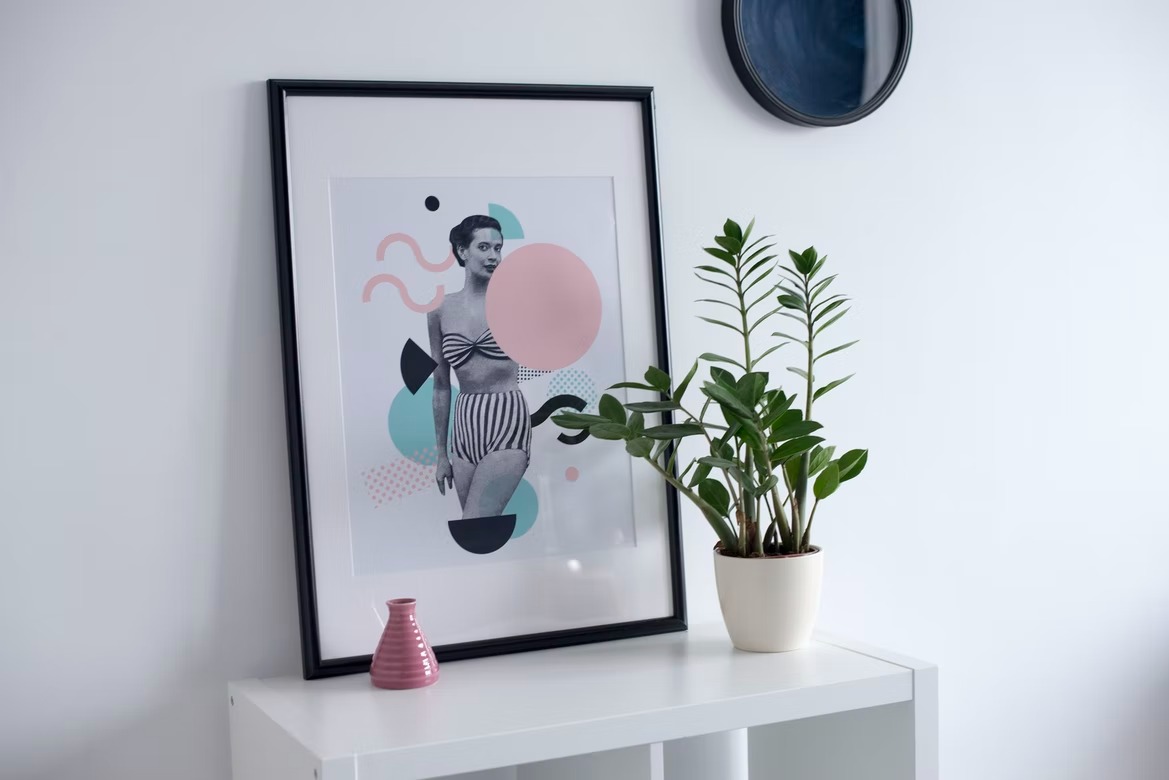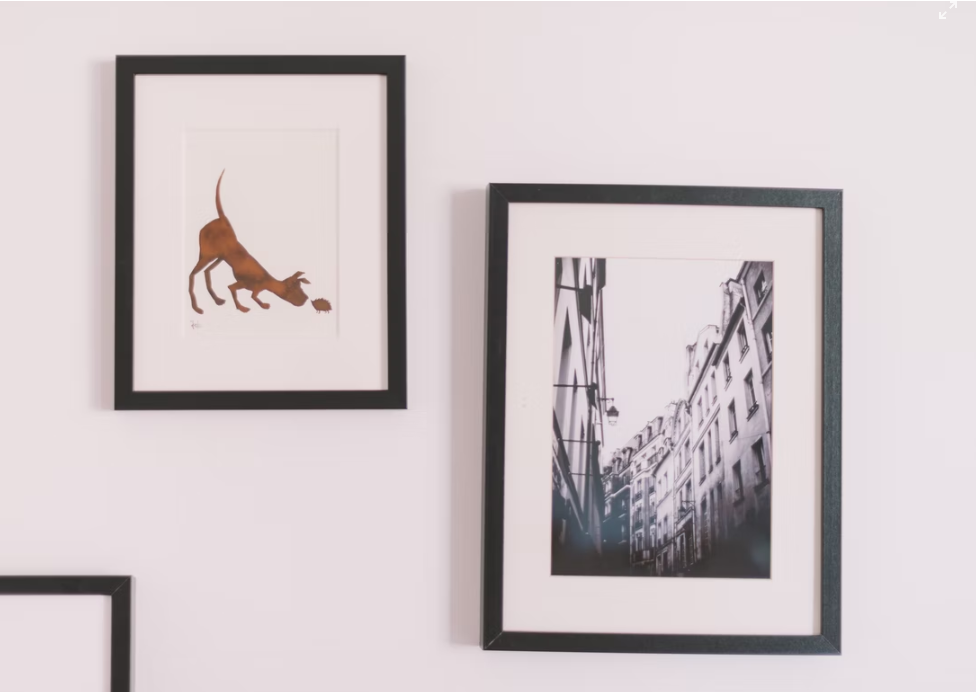When choosing decor, you can’t be guided by the principle “and now we need to add something to the walls.” An interior concept is built around a work of art, whether it’s a painting, sculpture, installation or art object. A completed and elaborated apartment design project will not be “alive” if it’s devoid of such a “zest.” Today we will try to help you find your perfect work of art. Perhaps you are worried about choosing the right colors or size to suit your space. Trying to decide whether to choose a traditional piece or an abstract canvas. Here are some tips to help you make the best decision.
Trust your gut and your space
When choosing a painting, it is important to consider the latest trends and principles of interior design: style, layout, and lighting.
To create a harmonious interior, it is important to select canvases of the appropriate style so that there is no dissonance with the general atmosphere of the apartment. If your house is designed according to the principles of a high-tech metal style, then it’s unlikely that a work of the Renaissance era will suit it. The interior can be minimalistic with williston forge furnitire, but a picture or photograph can completely change the mood.
However, everything has exceptions to the rule. There’re styles based on a mixture of aesthetics – fusion, eclecticism, kitsch. In such an interior, a painting or sculpture doesn’t occupy a central place but is one of the additional details. The principle of redundancy in kitsch style is just a technique for creating the right atmosphere. But such specific interiors aren’t for everybody.
It is important to consider what emotions you hope to create in the room where the artwork will be displayed. Who and how often will see it? How do you want to feel in this space? For example, something bright and bold for the living room where friends hang out, and something more calm and serene for the bedroom. As an alternative – more conservative things for public spaces, and vice versa – provocative works in private areas of the house. Determining the overall mood of the room will help you decide which item is best for expressing emotions.

Add a twist or create a gallery
It is very important to decide on the location of the work of art in the interior. One large picture becomes the center of the interior composition; it should occupy at least 15 percent of the wall space so that the perception is harmonious.
An essential technical moment when choosing a piece is the assessment of the space itself, where it will be located. If you’re planning to hang a painting above a sofa on a large open wall, you’ll need a larger canvas, or conversely, lots of smaller pieces to fill the space. If you make a mistake with the size and choose something too small, it may not look quite appropriate.
When it comes to home decor, there are a few rules that you might find helpful. It’s best to use a neutral floor and furniture in the interior. If this principle is applied to all decorative elements in general, then the room will turn out to be soft in its atmosphere. If the piece “speaks” to you, buy it and adjust the space for it later.
If you have two paintings of different sizes that need to be placed on the same wall, then here you should be guided by the principle of similarity colors, styles, or execution techniques. Creating an art gallery is a design technique that will definitely ennoble the interior. The main thing is not to overdo it. Again, for a spacious room with high ceilings and large windows, it is better to choose an overall canvas. For small spaces, a medium-sized horizontal image or several small works are suitable.
Artist’s palette
The traditional color proportions of a harmonious interior are 60/30/10.
- 60 percent of the color in the interior is the background, the shade of the walls.
- 30 percent is occupied by the additional color – textiles and furniture.
- 10 percent go to decor. A picture is a kind of wall decor, so it’s the same 10 percent.
That is why the story “I will leave this wall empty, then I will pick up something” is an illiterate approach to design. The choice of accent should be planned at the design stage of the project. If the color of the room is muted, then the picture can become its bright color accent.
Poignant plot
Of course, the choice of the plot of the picture is a personal matter for everyone. However, interior designers warn against buying a portrait with an unpleasant face or an overly acidic landscape. Paintings that have a strong psychological impact can eventually become a real problem. It’s advised to give preference to calm, creative subjects or abstractions.
The work should correspond to the mood and functional load of the room. In the kitchen, a still picture concept is appropriate, in the living room, for example, an abstract painting, in the bedroom – a picture that conveys an atmosphere of calm and tranquility. Of course, these tips are not literal, the perception of art is individual for each viewer.

In the beams of spotlights
If a work of art occupies a central place in an interior composition, it deserves special attention. Artificial spot lighting will emphasize the status of the picture.
It’s worth taking care in advance to protect the picture from fading. Especially if it’s expensive and of high artistic value.
Where to buy a painting
When choosing a picture, you should try it on for the future interior. Focusing only on artistic value or cost is wrong. Some people buy paintings in galleries with big names, at auctions, at street festivals or commissioned from artists – it all depends on the budget and preferences. It is important that an emotional connection with the work arises, then the interior will be dictated by the painting.
Works of art will move with the owners from one house to another and are a key interior component.
Art or plagiarism
Our advice: give preference to the works of unknown artists, rather than reproductions of famous authors. The “Kiss” by Gustav Klimt or the “Birth of Venus” by Botticelli, although they are legendary canvases of world art, will look like consumer goods in the interior. It’s better to choose an author’s work: a painting on canvas, a glass panel, a fragment of street art or a photograph – original, unique works, and not a widely disseminated copy. The first thing is to find what you want to see every day. You can find a lot of pieces that go with the rest of the decor, but if you don’t like looking at them, don’t buy them. Start by finding artists and styles you like. Are you more attracted to conceptual works that stimulate the intellect? Or delicate watercolors that evoke a sense of calm? Take the time to learn more about the artist you like. A better understanding of what the artist is trying to convey will create a deeper connection with the work – you’ll clarify for yourself the context and meaning around which the work is centered. Of course, the best way to understand the author’s motives is to meet them personally.
If you want to purchase an expensive and high-status piece, we recommend contacting art consultants. Galleries around the world provide a wide variety of contemporary art and antiques.
Finding artwork is one of the most fundamental tasks in interior design. Art in the interior conveys emotions, sets the atmosphere and makes the space truly individual. For some decorators, it’s the art that brings all the ingredients together. A well-chosen work of art in the interior will create a harmonious space around it, breathe life energy into it and fill it with colors.

